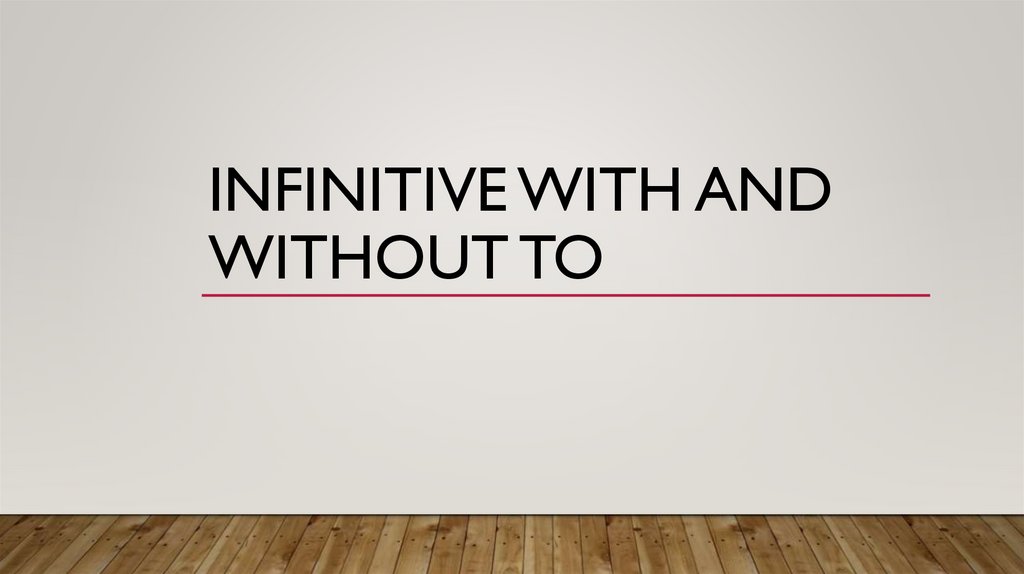Похожие презентации:
Infinitive with and without to
1.
INFINITIVE WITH ANDWITHOUT TO
2.
FORMThe infinitive of a verb has two forms: the to-infinitive and the infinitive without to.
The to-form consists of to plus the base form of the verb:
• I want to speak to you.
• We came here to work, not to play.
The form without to consists of the base form of the verb:
She made us wait for half an hour.
John lets the dog sleep on the sofa.
3.
TO-INFINITIVE• We use the to-infinitive after a number of common main verbs.
For example:
agree
aim
arrange
ask
begin
choose
claim
continue
decide
demand
fail
forget
hate
help
hope
intend
learn
like
long
love
manage
mean
need
offer
plan
prefer
prepare
pretend
promise
propose
refuse
remember
try
want
wish
4.
TO-INFINITIVEagree
demand
long
pretend
aim
fail
love
promise
arrange
forget
manage
propose
ask
hate
mean
refuse
begin
help
need
remember
choose
hope
offer
try
claim
intend
plan
want
continue
learn
prefer
wish
decide
like
prepare
5.
TO-INFINITIVE• We arranged to see the bank manager and applied for a loan.
• Mrs Harding asked us to call in on our way home.
• Did you remember to post the letter to your mother?
• He just wants everyone to be happy.
Tip:Some of these verbs are also often followed by -ing.
6.
TO-INFINITIVEWe can use the to-infinitive in a clause with a verb that has no subject (a non-finite
clause). The to-infinitive focuses on the idea of an action or the results of an action,
rather than the action in itself:
• To work in a developing country had always been her ambition.
• To get there before lunch, you would have to take the seven o’clock train.
7.
INFINITIVE WITHOUT TOWe use the infinitive without to after modal
verbs can, could, may, might, will, shall, would, should, must:
• She can sleep in the guest room tonight.
• Will you need to rent a car during your stay?
We also use the infinitive without to after let, make and (optionally) help:
• He lets us use some of his land to grow vegetables.
• You can’t make a cat do anything it doesn’t want to do.
• I just want to help you (to) understand the situation better.
8.
TYPICAL MISTAKESWe don’t use the to-infinitive after modal verbs:
• We might buy a new sofa.
• Not:We might to buy a new sofa.
We don’t use the infinitive (with or without to) after prepositions:
• Lemon juice is useful for cleaning stained surfaces in the kitchen.
• Not: … is useful for clean … or … for to clean








 Английский язык
Английский язык








